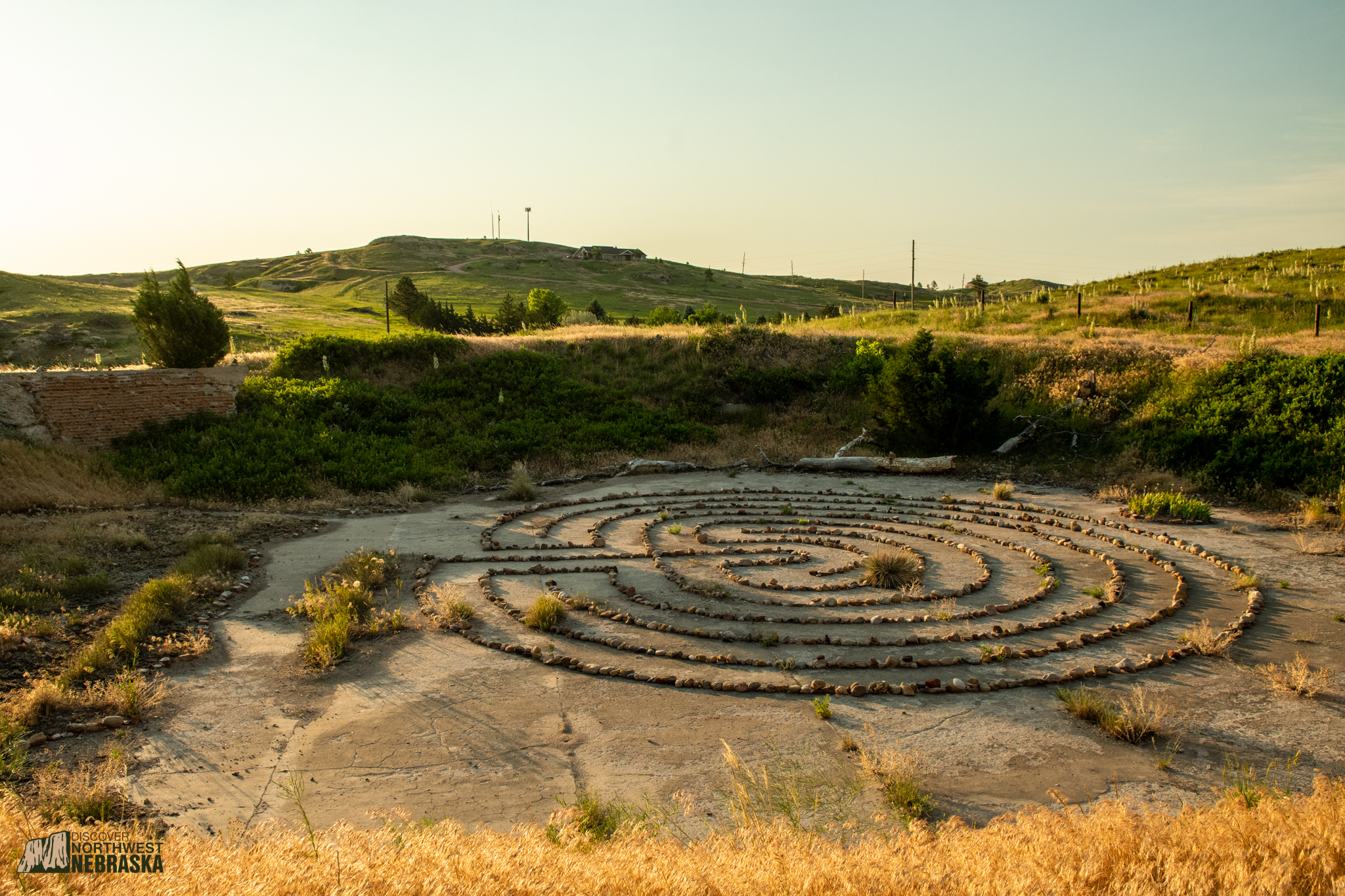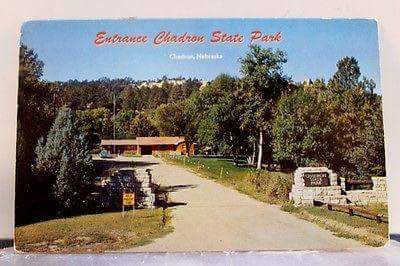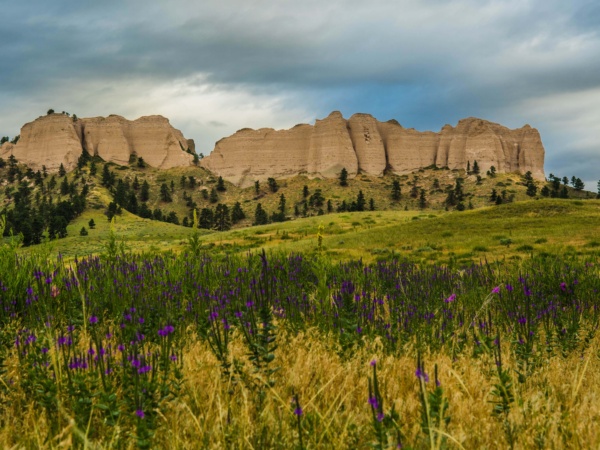By Kerri Rempp
Discover Northwest Nebraska
Northwest Nebraska’s newest attraction, a piece of Earth art, is designed to encourage users to slow down, reflect and gain new perspective.
Community volunteers and Chadron State College students and staff completed a Classical seven-circuit labyrinth in the midst of the COVID-19 pandemic, a piece of land art using natural materials created to inspire contemplation.
“Our campus is set into the remote Pine Ridge escarpments of Northwest Nebraska on the edge of the High Plains,” Mary Donahue, a CSC professor of communication, music, art and theatre, wrote for a case study on the labyrinth’s conception. “Within the hills on the south edge of campus is a historic, brick-walled open-air cistern, once used as the water supply for the town of Chadron. This was our planned labyrinth location. The cistern is a 15-minute hike from campus, through native grasses and yucca plants. From the top of the walls, a panoramic view extends beyond campus to the Black Hills of South Dakota. Walking down into the cistern, one’s focus becomes the circular space and the sky above.”
Labyrinths are depicted in neolithic petroglyphs, Roman pottery and Greek currency.
“They’ve been around a long time,” said Elizabeth Ledbetter, a retired CSC instructional designer and certified labyrinth facilitator. “It’s really interesting to think about where this bubbles up from, given that it’s lasted throughout history.”
Labyrinths have only one path in and one path out and can be found in monasteries, cathedrals, hospitals, colleges, parks, prisons and businesses. They have applications in education, team building, spirituality, art and more.
“You just kind of let go. It’s a walking meditation,” Ledbetter said

She first became familiar with labyrinths after visiting the one at Pathways Spiritual Sanctuary in the Black Hills. That design is modeled after a labyrinth at the Chartres Cathedral in France, an 11-circuit one built in the 13th Century. There are three stages of walking a labyrinth: letting go, receiving and reflecting. Each means different things to different people, Ledbetter said, but the end result is a change in perspective.
“It’s just a way of focusing. It’s best to go in with no expectations,” she said.
The labyrinth on the Chadron State College campus is located west of C-Hill on the southern edge of the campus past Briggs Pond. A hike to the labyrinth takes visitors through the Harold and LaVerne Thompson Natural History Preserve, 50 acres of land dedicated as a preserve for recreational and educational opportunities in 1975.
Ledbetter had thought for years the old cistern would be an ideal place for a labyrinth, but things didn’t start coming together until 2019-2020. Donahue was searching for an Earth art project she could do with her students, and Ledbetter mentioned the idea of a labyrinth at the old cistern. After visiting with Ledbetter, Donahue wrote up a proposal detailing the significance of labyrinths in history, culture and art for her dean and secured permission from the Chadron State College Foundation, which owns the land where it’s located, in December 2019.
Donahue’s spring 2020 graphic design practicum class researched labyrinths and their influence on wellness, history and art and used field trips to the site to take measurements and begin the planning process. Lucinda Mays, CSC’s grounds supervisor, also met with the class, teaching them about native plant communities at the site and how to draw site sketches.
Then March 2020 and COVID arrived. Students left for spring break and didn’t return until fall so the project was put on hold. That fall, Donahue’s graphic design solutions class took up the charge. One of the most challenging decisions was how to make the labyrinth, Donahue said. A variety of options and materials were discussed, but the renovation of the college’s Math and Science Building provided the opportunity to recycle rocks removed from that area to the labyrinth.

The Chadron State College Art Guild created the Rock and Run to challenge students to help transport the piles of rock to their new site. Five-gallon buckets donated by businesses and local citizens were filled, loaded on pickups and driven to the cistern. Students, after loading the rocks, ran to the site, dumped the rocks and ran back to campus, with prizes for the first three finishers.
“It was a fun way to get the rocks up there,” Donahue said.
By November of 2020, volunteers with the Mini Big Event helped prep the site and later that month community members, students and staff started laying out the pathways under Ledbetter’s direction.
“It was all outside so it was a really great thing,” Donahue said, allowing students a safe way to take part in something during the pandemic. In addition, part of her objective with her classes is to subtly encourage students to put down their devices and engage with the world around them, and the project also accomplished that.
Ledbetter settled on a Classical 7-circuit labyrinth because it fit the space while allowing the pathways to be wide enough for walkers to pass by each other without encroaching on the other’s space.
Jan Sellers of Labyrinth Pathways used Chadron’s labyrinth as a case study in her print and online index of Permanent and Landscaped Labyrinths in Universities and Colleges.
“It is a fine example of a labyrinth being in an exceptional setting, in pandemic times, with whole-hearted community participation (academic and wider community) and as a part of the curriculum. It’s valuable to have these aspects highlighted,” Sellers said in a CSC article about why she featured it as a case study.
According to Seller’s index, CSC is the only college in Nebraska to feature one of the creations.
Donahue didn’t know much about labyrinths prior to the project, except that they were prevalent in history and art. Learning how they are used to inspire students in education and as a place to be calm and de-stress became important to her as the project proceeded.
“(Mental health) is one of our biggest issues in higher education,” she said. The students benefited from the project from a wellness standpoint while it also expanded their thinking about how to create and enjoy art.
With plenty of leftover rocks remaining at the site, visitors to the labyrinth are now building cairns.
“They’re participating in making Earth art, unknowingly maybe,” Donahue said. “It was a really wonderful thing to do during COVID and to see people come together to create a bigger project like this.”







